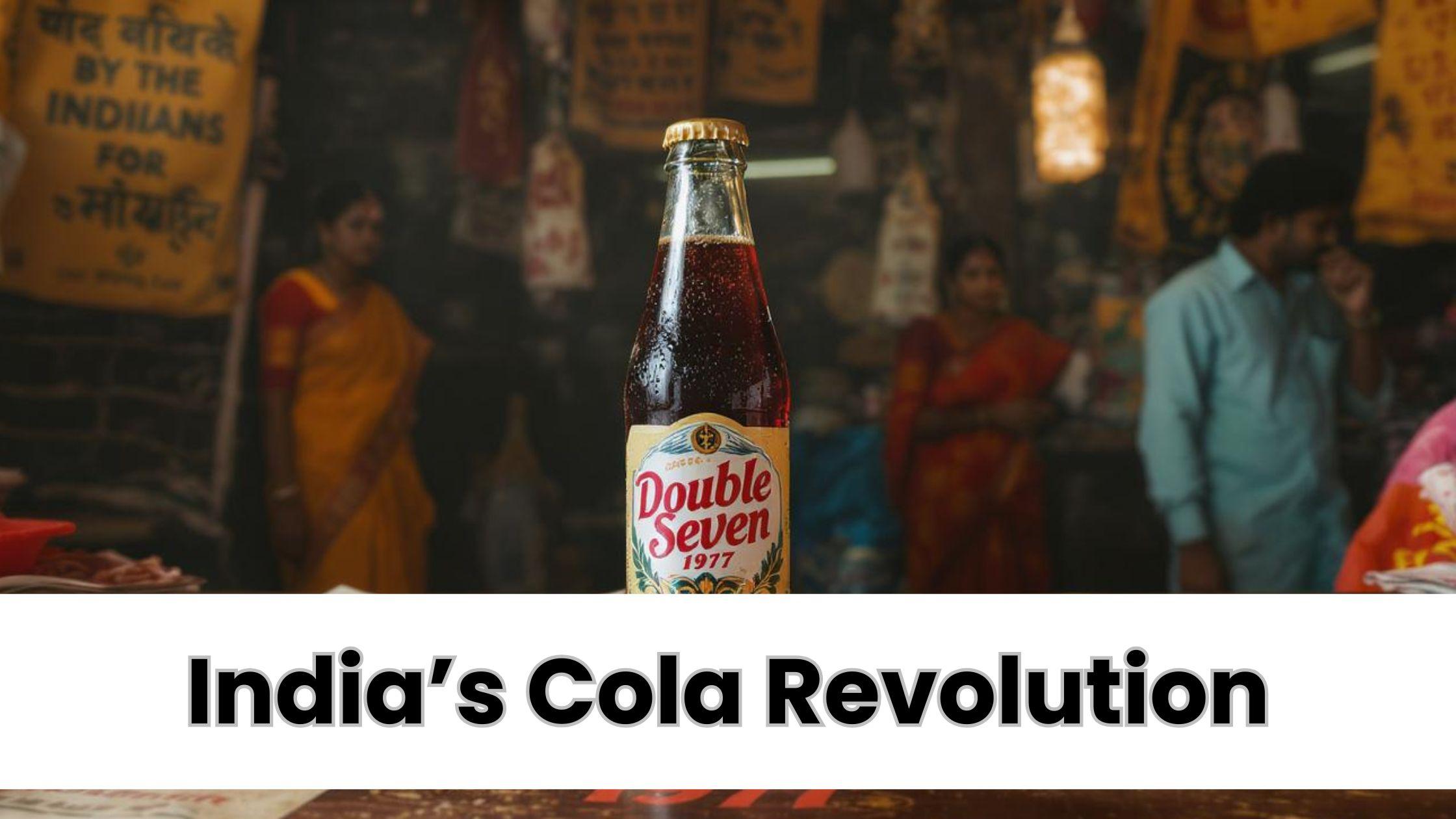Soda Sovereignty: India’s Double Seven Replaces Coke

India’s Cola Revolution highlights a transformative period in India’s beverage industry. When Coca-Cola exited India in 1977 due to regulatory pressures under the Foreign Exchange Regulation Act (FERA), the government moved quickly to introduce Double Seven, a domestic cola brand. This launch was aimed not only at filling the commercial void left by Coca-Cola but also at promoting national pride, self-reliance, and the swadeshi movement among Indian consumers.
Coca-Cola’s Market Exit
Coca-Cola had established itself as the leading cola brand in India, particularly in urban markets, representing modernity and global quality. FERA regulations of 1973 required multinational companies to dilute equity and disclose proprietary formulas, which Coca-Cola refused to comply with, leading to its voluntary exit. This created an unprecedented market opportunity for domestic brands to capture consumer attention and loyalty.
Birth of Double Seven
Double Seven was launched by Modern Food Industries in 1977, with the name symbolizing the year it debuted. The cola was designed using locally sourced ingredients and aimed to replicate the familiar taste of Coca-Cola while projecting a distinctly Indian identity. Its launch became a landmark moment in India’s Cola Revolution, showing that domestic brands could compete with multinational giants through branding, taste, and cultural resonance.
Branding and Marketing
Double Seven’s marketing strategy leaned heavily on nationalism. Advertisements highlighted the drink as “India’s Own Cola,” encouraging consumers to support domestic enterprise. Campaigns incorporated patriotic imagery and slogans, linking beverage consumption to civic duty and self-reliance. Initial consumer response was strong, particularly in government institutions, public-sector canteens, and local retail outlets.
Competing Against Private Brands
Despite government support, Double Seven faced fierce competition from private brands like Thums Up and Campa Cola. Thums Up gained popularity for its stronger, spicier taste tailored to Indian preferences, while Campa Cola positioned itself as a fun and youth-oriented option. These brands leveraged flexibility, rapid innovation, and aggressive marketing to gain a significant advantage over Double Seven in capturing consumer loyalty.
Operational and Distribution Challenges
As a state-backed brand, Double Seven faced bureaucratic inefficiencies that hindered responsiveness. Decisions regarding marketing campaigns, distribution, and product innovation were slowed by administrative processes. Production and logistics depended on state-run supply chains, which limited scalability and adaptability. Private competitors, in contrast, could respond quickly to consumer demand and regional preferences.
Political Influence on Double Seven
Double Seven’s growth and market penetration were closely tied to political support. Under the Janata Party, the brand enjoyed strong institutional backing and visibility. However, with the return of Congress in 1980, government focus on Double Seven waned. Reduced marketing budgets, fewer distribution incentives, and declining institutional prioritization led to a gradual erosion of the brand’s presence in the market.
Lessons from India’s Cola Revolution
The rise and decline of Double Seven provide critical insights:
-
Patriotism drives early interest – Nationalist branding can generate consumer curiosity and initial adoption.
-
Operational efficiency ensures longevity – Efficient marketing, supply chains, and rapid innovation are key to sustaining market share.
-
Consumer preferences prevail – Taste, branding, and engagement are more important than symbolism alone.
-
Political support is temporary – State-backed brands may struggle when government priorities shift.
Legacy of Double Seven
Although Double Seven eventually lost market share to Thums Up and Campa Cola, its legacy in India’s Cola Revolution is significant. It illustrated that domestic brands could challenge multinational dominance using cultural branding and national identity. Coca-Cola’s reentry into India in the 1990s, along with its acquisition of Thums Up, highlighted the enduring strength of private enterprise. Double Seven remains a symbol of India’s attempt to assert industrial independence through consumer goods.
Read Full Article : https://bizinfopro.com/news/marketing-news/indias-cola-revolution-how-double-seven-replaced-coca-cola/
About Us : BizInfoPro is a modern business publication designed to inform, inspire, and empower decision-makers, entrepreneurs, and forward-thinking professionals. With a focus on practical insights and in‑depth analysis, it explores the evolving landscape of global business—covering emerging markets, industry innovations, strategic growth opportunities, and actionable content that supports smarter decision‑making.
- Art
- Causes
- Crafts
- Dance
- Drinks
- Film
- Fitness
- Food
- Игры
- Gardening
- Health
- Главная
- Literature
- Music
- Networking
- Другое
- Party
- Religion
- Shopping
- Sports
- Theater
- Wellness




